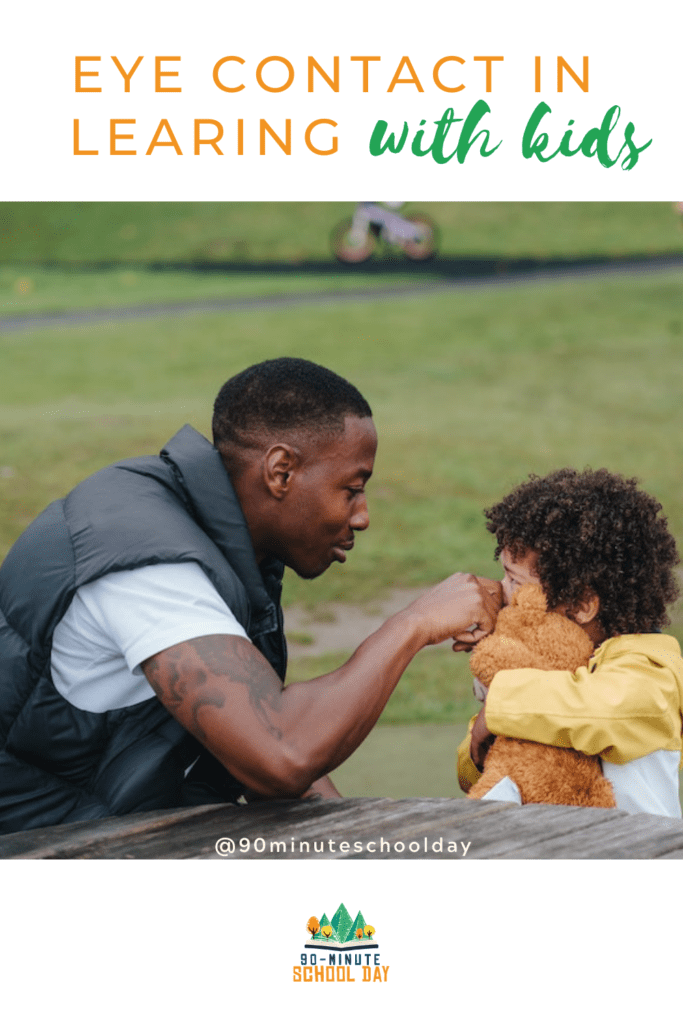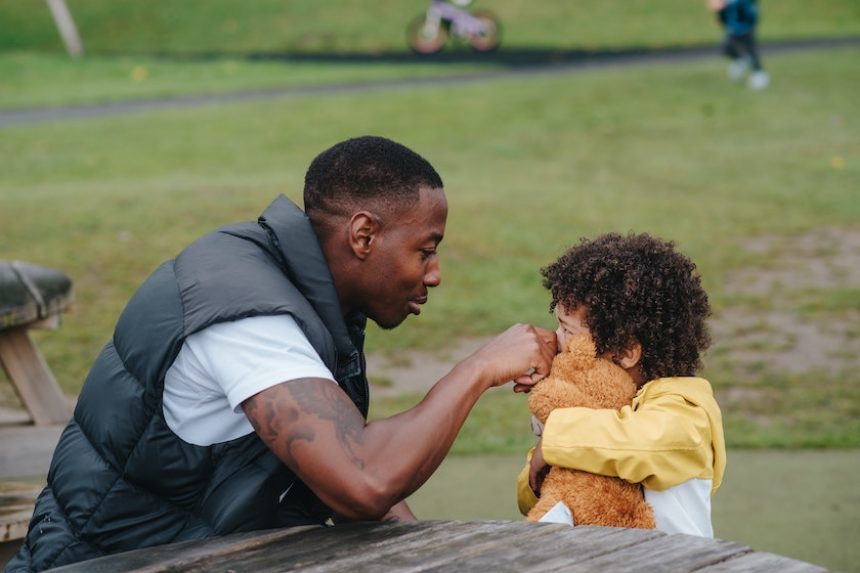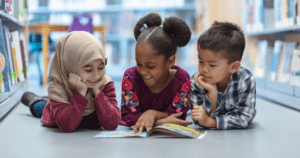A few weeks ago, my family met with some neighbors to sled. One family recorded the experience on their GoPro. Watching this video gave me a child’s eye view, complete with squeals and looking up at Mom to ask questions and connect. It uniquely displayed the wonder and magic of childhood. It also showed how tall grownups are to a child. This story reminds me of the importance and nuances of eye-contact in learning and in relationships.
First, why is eye contact important?
Eye contact is powerful non-verbal communication. It offers rich social information between two people. Looking into another’s eyes shows honesty, emotional response, thinking, confidence and engagement levels. Similarly, eye-to-eye communication validates and respects the other person. So, get down to a child’s level whenever possible to really connect. This is a respect-connection cycle. Form respect by creating space to make eye connection, then emotional connection follows. Looking someone in the eyes ignites vulnerability. Vulnerability opens emotional channels where conversation, cooperation and collaboration can bloom.
Alternately, eye contact can be difficult or even threatening for neurodivergent people. These are individuals that have difficulty with social interactions such as ADHD, autism, abuse, trauma, schizophrenia or anxiety to name a few. It is important, therefore, to teach children to love, respect and accept people with differences and celebrate their uniqueness. There are other ways to connect and form attachment beyond eye contact, we discuss several of them in this series. If neurodiversity is new to you, now is a great time to learn more so that you can be supportive and encouraging in your relationships with everyone.
Eye contact is also a form of touch.
It neurologically stimulates the attachment centers of our brain. It is also a type of listening. Do you ever find yourself saying, “Listen to me!” or “Look at me when I’m talking to you,” or “Look me in the eyes when you say you’re sorry”? You are often asking that person to make eye contact so that you feel heard. A face-to-face conversation with good eye contact is a pro-social skill for effective communication between two people. Place a priority on eye contact for connection as well as correction.
Looking at eyes is a predisposition from infancy. This is partly due to the whites of our eyes, which are exclusive to humans. The contrasting iris commands attention. Because of this, we can easily identify where someone is looking and see what they are thinking or feeling. As a result, we communicate to the world through our expressions, voice and eye contact.
Understanding all of this, how does eye contact in learning work?
Our brains have mirror neurons that activate when we observe another individual performing an action. We watch and feel as if we are also accomplishing the action. For example, a subconscious yawn transfers from person to person. These mirror neurons not only help build empathy, but also aid in observational learning and imitation.
Furthermore, mirror neurons activate also by listening audibly. Because of this, sound is another avenue for neurodiverse people to learn in lieu of eye-contact. We naturally adopt cadence, pacing and accents from listening to someone else speak. Using mirror neurons through imitation teaches physical, emotional or social rules that you can apply to other situations.
Understanding mirror neurons, therefore, contribute to one of the main reasons behind the American Academy of Pediatrics’ stance on limited screen time. The AAP recommends limiting screen time on a sliding scale for children, especially in younger children who developmentally don’t distinguish well between television and reality. Optimize observational learning with measured doses of educational programming. Read more about these guidelines for your child’s age here.
Finally, studies show eye contact and mirror neurons improve memory in learning.
A person’s direct gaze with another helps with self-awareness and strengthens context to the information presented. This study involving classroom children showed students who had direct eye contact with the teacher had better recall over the verbal material after class than the children who did not have eye contact.
In conclusion, improving our eye-contact skills increases not only our intellectual learning, but also our social and emotional learning. Here is a list of practical ways you can mindfully implement eye contact in learning in your home.
- Practice looking into the eyes of the person with whom you are speaking. Don’t stare or overthink it. Just be more intentional and practice.
- Drop screens at family meals, place them elsewhere and practice eye-level conversations.
- Practice looking into the eyes of the person who is speaking to you. This is hard, but small intentions build!
- Get down on their level to speak, especially when emotions are escalating!
- Add touch when speaking, if appropriate.
- Play the staring game, first to blink loses!
- Play the mirror game, copycat the facial expressions of the other for as long as possible.
- Play peek-a-boo.
- Play face-to-face games like cards, battleship, checkers, chess, etc.
- Play pass the emotion game, pass an emotion from one person to another. Start with a smile and go around to everyone turn by turn. Change it up and practice other emotions. It’s a fun game and helps emotional learning as a bonus!





